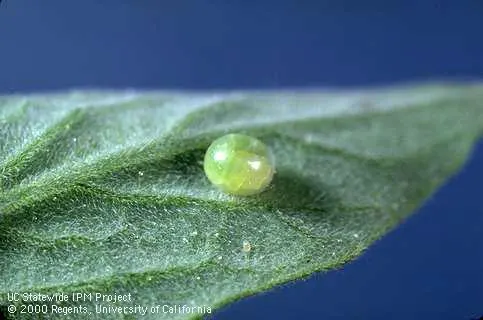
Growing tomatoes can be incredibly fun and rewarding. But sometimes, things can go wrong, and we don’t talk about those enough.
Last year, I almost gave up on my tomato plants because of a small pest that decided to take up residence in my garden.
After a while, I discovered that this pest was from the hummingbird moth family, and now I know something else…
Watch Out for Sphinx Moths!
Sphinx moths are a type of hummingbird moth. They might not be mythical, but they can certainly cause a lot of damage to your tomato plants.
Despite their name, they don’t have much to do with hummingbirds. Yes, they hum and sip nectar, but the similarities end there.
While adult moths are pollinators, which can be beneficial, the real trouble starts when they lay eggs. The eggs hatch into tomato hornworms, which can be a gardener’s nightmare.
These insects love feasting on tomato leaves and quickly move on to the fruits. The more they eat, the bigger and more destructive they become. That’s exactly what happened to me last year.
How to Spot and Deal With Sphinx Moths

The first step to tackling this problem is identifying sphinx moths. Unfortunately, this isn’t easy since they’re mostly active at night.
As you sleep, they feed on flowers and lay eggs. A single female sphinx moth can lay up to 1,000 eggs! If you see small, round, bright green eggs on your tomato leaves, those are likely the culprit.
These eggs, usually about 1¼ inch long, often appear in late spring. To spot them, you’ll need to inspect your plants closely.
Once the eggs hatch, you have limited time to act—usually just three days. If you find them early, you can simply rub the leaves gently to remove the eggs.
If the eggs have already hatched, you’ll need to pick the hornworms off one by one or get some help. Drop the hornworms in soapy water to get rid of them.
Here Are Some Helpful Allies:
- Bacillus thuringiensis var. kurstaki (Bt): A natural soil bacteria used in organic pest control.
- Dish Soap Solution: Mix 2 tablespoons of dish soap with a quart of water and spray it on the tomato leaves.
- Capsaicin Spray: Crush 6-7 dry peppers, add to boiling water, cool, then spray on the leaves.
Prevention Is Key!
Preventing pests is the best way to protect your tomato plants. While dealing with tomato hornworms, I found several methods that helped.
Some suggest using zap lights to attract and kill moths, but this isn’t the best approach. Moths are pollinators, and we need them in our gardens.
Instead, install protective covers over your tomato plants in late spring. Tunnels, row covers, and garden hoops can prevent sphinx moths from laying eggs.
Another effective method is companion planting. Strong-scented plants like borage and marigolds can keep hornworms away from your tomatoes.
Finally, let nature help! Plant yarrow to attract wasps, which will lay eggs on hornworms and get rid of them.
Sphinx moth eggs are something you don’t want on your tomatoes. Regularly check your plants, and if you see the eggs, take action quickly to prevent damage!
